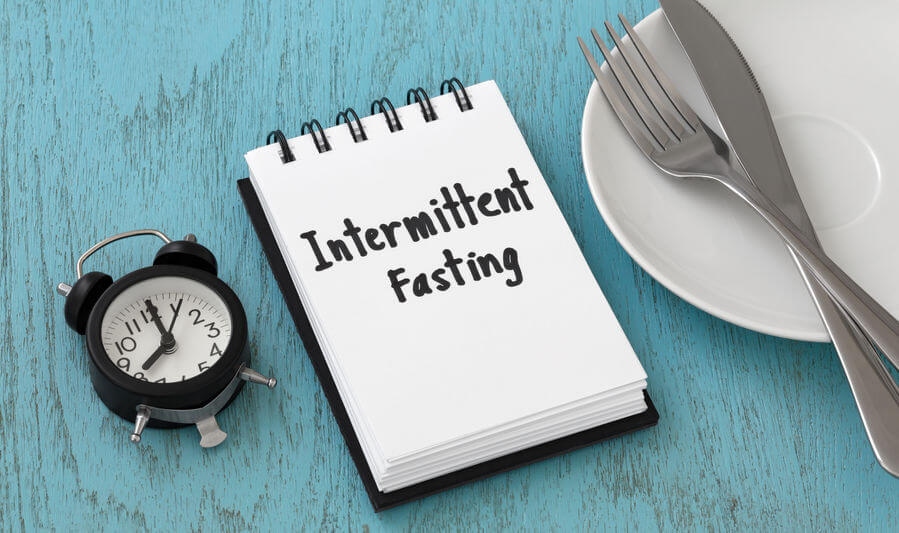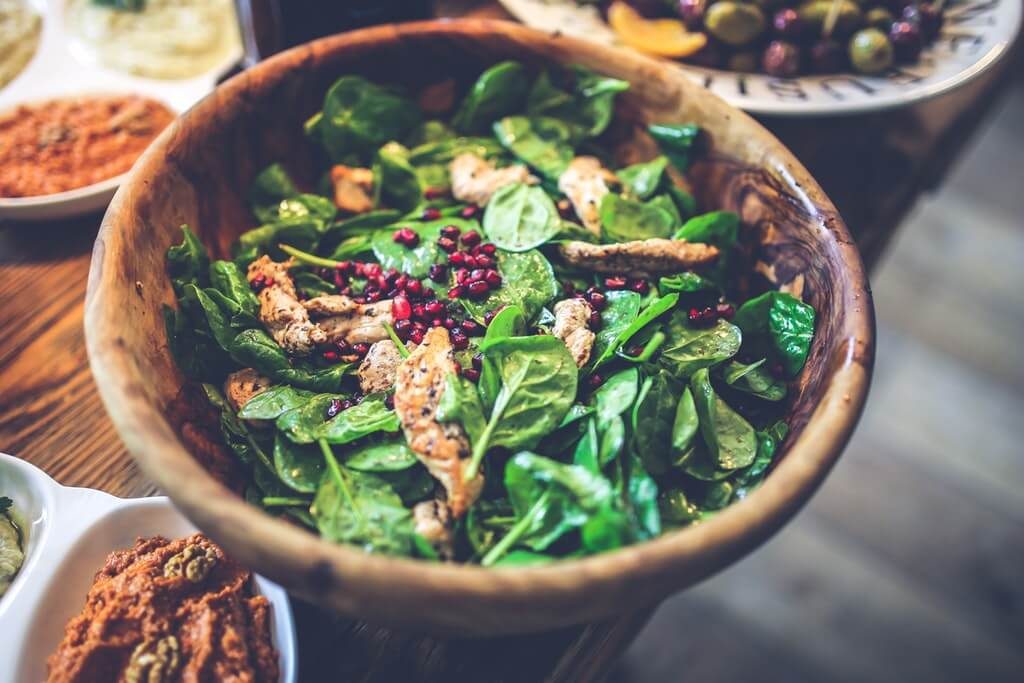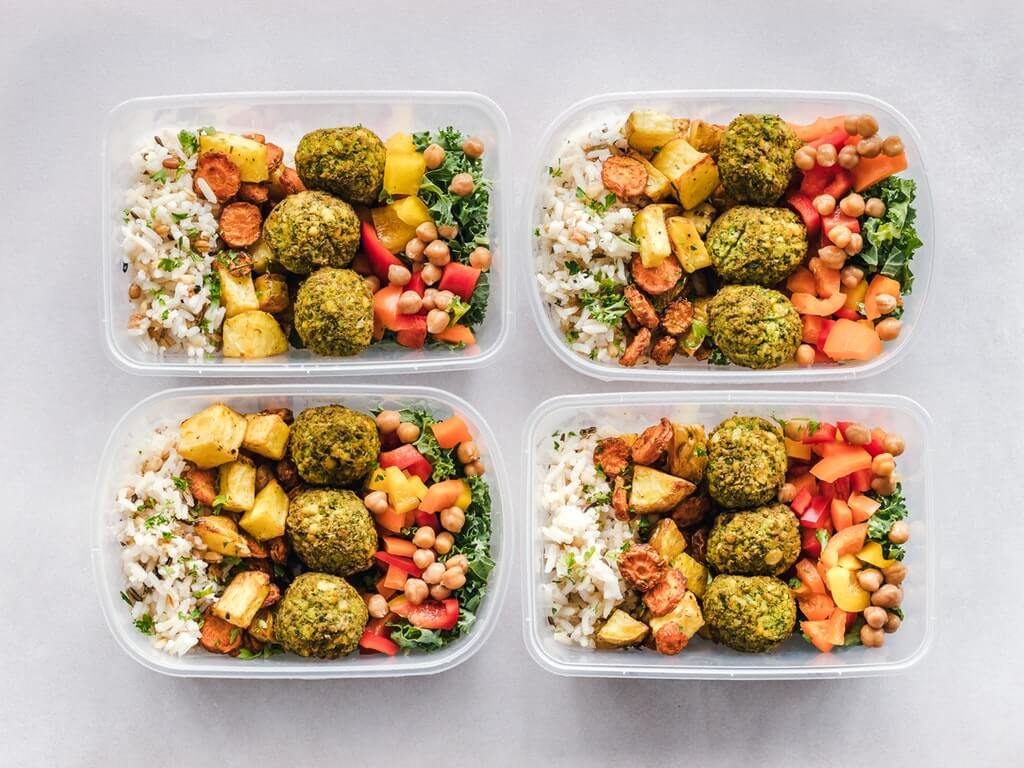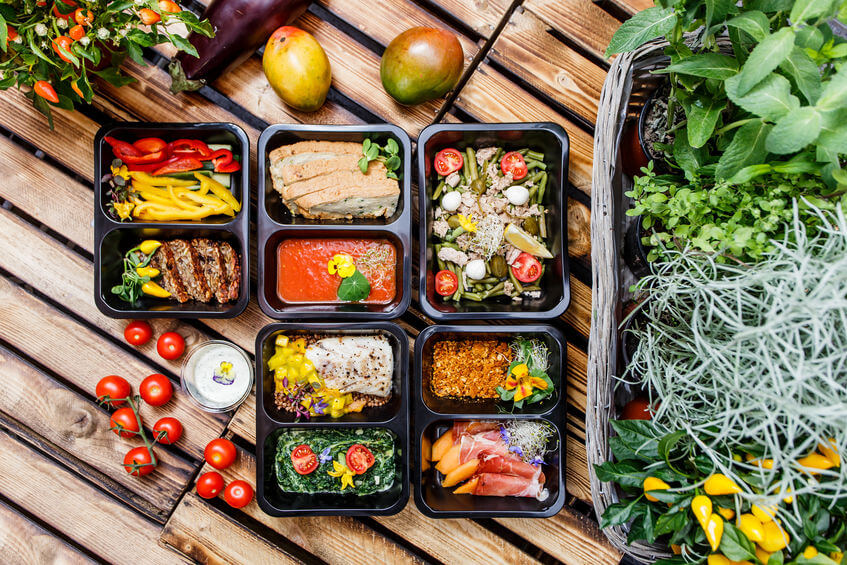Intermittent Fasting and Keto: a Winning Weight-Loss Combination
I know… there are hundreds of different weight-loss diets, and choosing the right one can be challenging.
I know because I’ve tried a majority of them.
Over the years, though, I’ve found that combining intermittent fasting and keto is one of the best combinations, mostly, because they are closely related.
But using these two methods simultaneously takes some finesse to ensure you’re making the right choices.
In this article, we’ll go over the benefits of these two diets and discuss how using both at the same time can present a few challenges, but also, help you achieve the body you want.
Contents
- What is Intermittent Fasting?
- What is the Ketogenic Diet?
- Can You Mix Intermittent Fasting with Keto?
- What are the Potential Benefits of Practicing Intermittent Fasting & Keto?
- What are Potential Disadvantages of Practicing Keto and Intermittent Fasting?
- How to Overcome the Challenges of using Intermittent Fasting & Keto
- Sample Intermittent Fasting & Keto Day
- FAQ
- Final Thoughts
What is Intermittent Fasting?
There’s a good chance you’ve heard of intermittent fasting before. And that’s because it’s one of the more popular dieting methods and fortunately, one of the most effective.
With this pattern of eating, you spend a significant portion of the day fasting or consuming no calories.
Then:
Once the fasting period is over, you mainly eat all of your daily calories in a short window of time.
Typically, when practicing intermittent fasting, most people fast anywhere from 12 to 16 hours at a time, with some going shorter and some longer.
For example:
Let’s say you want to fast for 16 hours and you have your last meal of the day around 7:00 pm. If you fast for 16 hours, that fasting period will be complete by 11:00 am the following morning.
After…
You then eat all of your regular calories until 7:00 pm and restart the cycle. Simple enough!
Essentially, a gigantic portion of the fasting period is while you’re sleeping if you want, which makes getting through it pretty easy.
Why use Intermittent Fasting?
While there are many different health benefits of intermittent fasting, the reason most people like it so much is that it makes reducing calories a breeze.
I’m sure you already know there are thousands of different dieting styles. Paleo, Keto, Vegetarian, you name it. These are all different ways of going about the same thing:
These diets create a calorie deficit.
In the purest sense, our bodies function on energy balance. If you consume fewer calories through diet than you burn each day through activity, you’ll create a negative energy balance or energy/calorie deficit.
Since our bodies are made up of calories, if you take in fewer than you burn, you’ll lose weight.
Easy, right?
In theory, weight loss is simple but rarely does it pan out that way. That’s why there are many different diets, all with different ways of achieving this energy deficit.
Back to intermittent fasting:
The reason people find this diet so easy to use is because, during the fasting period, you’re not consuming any calories. This makes creating an energy deficit very easy.
You’re just burning calories without consuming any.
Even more, since the eating period is pretty small, it makes overcoming this deficit a bit challenging.
As a result:
Weight loss comes pretty easy with intermittent fasting. And that’s why it’s such a popular method.
What is the Ketogenic Diet?
Just like with intermittent fasting, the keto or ketogenic diet is a way to create a calorie deficit, but you do so through a different way of eating.
With the ketogenic diet, you’ll radically change your eating habits to consume almost 60% or more of your calories from fat.
Now:
With keto, when you consume high amounts of fat, you’ll also consume really low amounts of carbohydrates and relatively low protein.
By doing this, you change how your body uses energy.
Pretty cool, right?
When you eat a regular diet with a lot of carbs, protein, and fat, your body prefers to use a type of energy called glucose, which is virtually sugar.
Alternatively:
When you eat a large amount of fat, your body makes up for the lack of glucose from carbs by creating ketones.
Ketones are a byproduct of the body metabolizing more fat than it can handle. Fortunately, most tissues of the body like the brain, liver, and muscles can use ketones in place of glucose.
In addition to some different health benefits of ketones, many people find that eating high amounts of fat helps them eat fewer calories.
Mostly, because fat is satiating or filling, it enables you to feel fuller for longer.
While both keto and intermittent fasting have their own health benefits, when it comes to weight loss, each method provides a different way to achieve the same calorie deficit.
Can You Mix Intermittent Fasting with Keto?
Amazingly, the ketogenic diet was invented to mimic the effects of fasting.
That’s right…
Back in the 1920s, while experimenting with different methods to combat epileptic seizures, scientists discovered that after multiple days of total fasting, the seizures of patients were not as strong.
As it turns out, fasting for a few days shifts the body into a metabolic state of ketosis, where the body switches from glucose to ketones as fuel.
But:
They realized that for most people, long-duration fasting simply wasn’t practical.
I mean… could you eat nothing for three to four days?
Instead, they formulated the ketogenic diet where patients could eat reasonable amounts of calories, but still achieve the metabolic state of ketosis.
Mostly, this means that the ketogenic diet can be used at the same time as intermittent fasting.
However…
Doing so will require careful monitoring of your food and macro intake to avoid eating too few or too many calories.
Surprisingly, both are a possibility with these diets.
What are the Potential Benefits of Practicing Intermittent Fasting & Keto?
Fortunately, because of the proven benefits of intermittent fasting and the ketogenic diet, there are some advantages of practicing both.
Intermittent Fasting Can Help You Reach Ketosis Faster
On the ketogenic diet, the goal of eating such high amounts of fat and low amounts of carbohydrates is to switch your body into the metabolic state of ketosis.
This means:
Your body is prioritizing ketones as an energy source instead of sugar or glucose.
But this process doesn’t happen overnight. In fact, for many individuals, reaching ketosis can take days or even a few weeks.
As an example, the last time I used the ketogenic diet, it took me almost a week and a half to reach ketosis.
With intermittent fasting, if you fast for a significant portion of time, your body can begin to burn fat for energy preferentially. If you combine this practice with high fat, low carb diet, you possibly speed up the process.
Additionally:
You can even take ketone supplements at the same time, such as ketone salts.
These types of supplements can help elevate blood ketone levels faster, while potentially even helping with hunger while fasting. It’s a winning combination.
Intermittent Fasting Can Help Reduce Symptoms of the Keto Flu
One of the downsides of a ketogenic diet is the dreaded “keto flu”.
When you’re transitioning from a regular diet to a ketogenic diet, many people experience flu-like symptoms. These symptoms include nausea and gastrointestinal problems in addition to difficulty in thinking clearly.
This “flu” is likely because you’re radically changing the eating habits that you’ve practiced your entire life.
If you think about it:
Your tissues and organs are probably used to receiving regular glucose from carbs. Now, you’ve almost removed all of those carbs from your diet to reach ketosis.
It’s no wonder why your body might react poorly at first.
Fortunately, once you successfully reach ketosis regularly, these symptoms begin to decline as your body adjusts.
Since intermittent fasting can possibly help you reach ketosis faster, doing so can help speed up this transitionary period, helping you feel better a little bit sooner.
Intermittent Fasting Can Help You Avoid Overeating on Keto
Both intermittent fasting and the ketogenic diet provide weight loss through creating the energy deficit I mentioned earlier.
This means, to lose weight, you still need to consume fewer calories than you burn through activity.
With the ketogenic diet, achieving this deficit can be difficult.
Mostly:
Fat is the most energy-dense nutrient you can consume. For instance, each gram of fat provides the body with nine calories, where both carbs and protein only provide four calories per gram.
For example:
Since peanut butter is mostly fat, just two tablespoons will provide almost 180 calories.
Alternatively, you’d need to eat a little over four ounces of chicken breast to achieve that same amount of calories.
If you’re anything like me, eating more than two tablespoons of peanut butter is far easier than eating large amounts of lean chicken breast.
Since the ketogenic diet requires that most of your calories come from fat, most of your food sources will be very energy-dense. This means over-consuming calories becomes a real and easy possibility.
Fortunately:
Since intermittent fasting reduces the amount of time you can eat each day, most of your meals will be a bit larger than normal.
As a result, you’ll feel fuller from each meal and less likely to continue eating.
Second, one of the main benefits of intermittent fasting is that during the fasting period, you’re almost entirely burning calories.
This creates a significant energy deficit.
As a result of having fewer hours to eat, overcoming the energy deficit created by the fasting period becomes difficult, making weight loss pretty easy.
Now…
Staying in an energy deficit isn’t a guarantee.
You’ll still need to pay attention to what you’re eating. But, using intermittent fasting often makes doing so a little easier.
What are Potential Disadvantages of Practicing Keto and Intermittent Fasting?
Despite the many health benefits of intermittent fasting and keto, practicing both at the same time can present some challenges to consider.
Both Intermittent Fasting & Keto Can be Challenging
Since both intermittent fasting and the ketogenic diet require that you change your eating patterns, and in the case of keto, the types of foods you eat, they can be challenging diets when combined.
For example:
With fasting, you’re changing your eating patterns to fast for many hours of the day compared to eating a few meals and some snacks.
With keto, you have to prioritize most of the calories to come from fat, which isn’t how most people usually eat.
If you decide to jump into both eating styles at the same time, you could find that doing so is very challenging to start and maintain.
Now:
Making the change to both forms of eating is possible, but you need to consider that you’ll need to put forth a lot of effort to do so successfully.
Establishing these habits one at a time can make both methods more effective and sustainable.
You’ll have to Track Your Food, Calories, & Macronutrients
Remember how I mentioned that weight loss requires a caloric deficit?
On regular diets, you can do so pretty quickly by just reducing your portions or opting for lower-calorie foods. With intermittent fasting and keto, you need to track your intake to ensure this deficit.
With keto, in particular, I mentioned earlier that overeating calories could be easy when eating foods with more fat, limiting weight loss.
But that’s not the only problem…
When you eat fat, it needs to undergo a minimal change in the body to be stored as body fat. Protein and carbohydrates, however, need to transform into fat to be stored as body fat.
This means overeating fat can make weight gain, and thus, fat gain a grave concern.
Diligent tracking can help you avoid this issue.
Keto Requires Checking for Ketosis
Until you become very familiar with the ketogenic diet, you’ll need to constantly check to make sure that your body is actually in the state of ketosis.
Otherwise, you won’t benefit from using keto.
To do so, you have to either check ketone levels in your urine using urinary ketone strips or take regular blood draws to measure the number of ketones in your blood.
If you don’t measure your levels of ketosis, you’re just guessing and hoping for the best.
Mostly:
Having to check for ketosis and radically changing your eating habits can be challenging.
How to Overcome the Challenges of using Intermittent Fasting & Keto
Despite there being some challenges, you can overcome them by using a sensible procedure.
Transition to Intermittent Fasting First
In my experience, transitioning into intermittent fasting is a bit easier than transitioning to keto because you can sequentially increase your fasting time.
For example:
You can start with something like a 10-hour fasting period, mostly while you sleep.
From there, you can increase the fasting period until you reach the duration of your preference.
Since intermittent fasting can help make the keto transition a little easier, you want to establish your fasting habit first, rather than trying to transition to both diets at the same time.
Be Consistent with Calorie and Macro Tracking
If you want to transition into intermittent fasting and keto successfully, you need to be consistent with your calorie tracking.
Doing so is not only crucial for weight loss but also to ensure that you’re eating enough fat on keto, but not so much that you gain weight.
I know…
Doing this can be a bit challenging. But it’s worth it if doing so helps you achieve the body and health you desire.
Eventually, once you become very familiar with both diets, it’s possible to move away from diligent tracking, while maintaining the benefits.
Reevaluate After a Month or Two
The reality is…
Combining intermittent fasting and keto won’t be the right choice for everyone.
And that’s ok!
If, after a month or two of giving both methods a chance, you decide that it’s not a winning combination, it’s ok to change things up a bit.
Just know that if you happen to decide that it’s the keto side of things you don’t enjoy, you shouldn’t just go right back to eating normally.
Just as there’s a transition period of going into the ketogenic diet, you should also respect that coming off the diet will require a bit of time too.
For example:
If you decide to transition back to regular eating habits, try reducing your fat intake by 10-20% for a few days, and then continue this trend until you’re back to your regular intake.
Sample Intermittent Fasting & Keto Day
- Intermittent Fasting: 16 Hours Fasting & 8 Hours of Eating
- Ketogenic Diet: 2,000 calories – 75% Fat, 20% Protein, 5% Carbs
6-7:00pmLast meal / Start fasting6 Oz. Ribeye39036495
| Time | Info | Ingredient | Fat | Carbs | Protein | Calories |
| 7:00pm | Last meal / Start fasting | |||||
| 11:00am | First meal / Break fast | 4 Slices of Bacon | 14 | 0 | 10 | 166 |
| 3 Whole Eggs | 14 | 1 | 19 | 206 | ||
| 1/2 Avocado | 11 | 6 | 1 | 127 | ||
| 1:00pm | Meal #2 | 4 Cups Romaine Lettuce | 0 | 6 | 0 | 24 |
| 2 Whole, Hardboiled Eggs | 10 | 0 | 12 | 138 | ||
| 1/2 Avocado | 11 | 6 | 1 | 127 | ||
| 4 Oz. Grilled Chicken Breast | 3 | 0 | 33 | 159 | ||
| 3 Tbsp. Olive Oil as Dressing | 42 | 0 | 0 | 378 | ||
| 6 Spears Asparagus | 0 | 4 | 2 | 24 | ||
| 1.5 Tbsp. Olive Oil | 21 | 0 | 0 | 189 | ||
| Daily Totals | 165 | 23 | 114 | 2033 | ||
In the above sample, there are a few details to keep in mind…
First, you’ll notice that the schedule begins the night before. This is when the fasting period for the following day begins.
This means:
Much of the fasting period is while you’re asleep, which can make things much more manageable.
Second, when it comes to the food choices, with keto, your goal is to consume high fat, low carbs, and moderate protein.
In this example day, you can see that fat intake is prioritized, while carbs are very low.
Mostly:
If you’re hoping to use the ketogenic diet effectively, maintaining high fat, low carbs, and moderate amounts of protein will be required for your body to switch into ketosis.
FAQ
Why am I not Losing Weight with Keto & Intermittent Fasting?
There are many reasons you might not be losing weight, but the most likely reason is that you’re consuming too many calories.
Remember:
No diet is magic. Different diets exist to provide various means of achieving a calorie deficit so that you can better suit your eating preferences.
If you’re having trouble losing weight, try paying closer attention to how many calories you’re consuming each day.
Then:
Consider eating about 10-15% fewer calories from that amount and see if you can begin losing weight.
Is Intermittent Fasting and Keto Acceptable for Men & Women?
Definitely.
It doesn’t matter if you’re a man or a woman, intermittent fasting and keto can help you gain better health and lose weight with ease.
Even better:
Many women who use intermittent fasting find that doing so helps with hunger.
Since many women have lower calorie intakes than males, intermittent fasting can help avoid accidental overeating, even when having bigger meals.
Do I have to Combine Intermittent Fasting and Keto?
Absolutely not!
While both of these dieting methods can be effective, they can help you lose weight and lead a healthier lifestyle, even if you only choose to use one of them.
For instance, I’ve tried both diets. Still, due to my preferences, I practice intermittent fasting, but don’t eat a ketogenic diet.
It all comes down to your preferences!
Final Thoughts
Combining intermittent fasting and keto can be a winning combination for weight loss because these diets are closely related.
However…
Doing so does present a few challenges that must be overcome for effectiveness and sustainability.
Also:
Remember that these diets are not magic and require an energy deficit for weight loss. If you’re not reducing calories, you simply won’t lose weight. Regardless of the diet you choose.
Now:
For more information just like this, make sure to subscribe to our newsletter for the latest info right to your inbox!
[starbox id=kkikuts]







